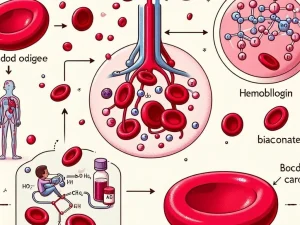The Name Assigned to the Transport Layer PDU
which name is assigned to the transport layer pdu
The transport layer’s protocol data unit (PDU) is essential for defining communication methods‚ ensuring data integrity‚ and facilitating networking between applications across networks.
1.1 Overview of the OSI Model
In the OSI model‚ the transport layer is responsible for the reliable transmission of data between devices. The protocol data unit (PDU) at this layer is referred to as a segment in TCP and a datagram in UDP. Understanding the significance of these terms aids in comprehending how data is encapsulated and transmitted across networking protocols effectively.
1.2 Importance of the Transport Layer in Networking
The transport layer plays a crucial role in networking by defining the protocol data unit (PDU) for data transmission. It is essential for managing communication reliability and flow control. Understanding that the PDU is labeled as a segment for TCP and a datagram for UDP enhances knowledge about data encapsulation‚ ultimately improving inter-networking and network communication efficiency.
Understanding Protocol Data Units (PDU)
In networking‚ the transport layer’s protocol data unit (PDU) is referred to as a segment in TCP and a datagram in UDP‚ ensuring effective communication.
2.1 Definition of PDU
A protocol data unit (PDU) in the transport layer serves as a fundamental component in data communication. It encapsulates information necessary for both establishing and maintaining connections. The PDU is specifically called a segment when utilizing TCP for reliable transmission‚ while it is termed a datagram in UDP‚ which emphasizes the differences in communication methods and reliability expectations between these protocols.
2.2 Role of PDU in Data Encapsulation
The protocol data unit (PDU) plays a critical role in data encapsulation within the transport layer. It structures the data into segments for TCP or datagrams for UDP‚ enabling efficient data transmission. This encapsulation process allows additional information‚ such as source and destination ports‚ to be included‚ enhancing the reliability and integrity of inter-networking communications across various network protocols.
The transport layer’s protocol data unit (PDU) is specifically named a segment in TCP communications and a datagram in UDP communications‚ reflecting their distinct functionalities.
3.1 Segments in TCP
In TCP communications‚ the protocol data unit (PDU) is referred to as a segment. This term highlights the importance of reliable‚ ordered data transmission. Each segment contains a header‚ which includes control information such as sequence numbers and acknowledgment numbers. Segments ensure that data is delivered accurately and in the correct order‚ providing essential flow control and error detection mechanisms during transmission;
3.2 Datagrams in UDP
In UDP communications‚ the protocol data unit (PDU) is referred to as a datagram. This term signifies a connectionless approach to data transmission‚ which prioritizes speed over reliability. Each datagram contains a header with essential information‚ such as source and destination ports. Unlike TCP segments‚ datagrams do not guarantee delivery order‚ making them suitable for applications that can tolerate some data loss.
Functions of the Transport Layer
The transport layer’s protocol data unit (PDU) is crucial for reliable communication‚ ensuring data integrity through segments in TCP and datagrams in UDP transmissions.
4.1 Data Transmission and Packetization
The transport layer’s protocol data unit (PDU)‚ whether a segment in TCP or a datagram in UDP‚ is essential for data transmission. Packetization involves breaking down large data streams into smaller‚ manageable units. This process not only facilitates efficient transmission but also helps in error detection and flow control‚ ensuring that data is sent and received accurately across networking systems.
4.2 Reliability and Flow Control
The transport layer’s protocol data unit (PDU) plays a vital role in ensuring reliability and flow control in data communications. In TCP‚ segments facilitate acknowledgment of received data‚ allowing the sender to retransmit lost packets. Flow control mechanisms prevent overwhelming the receiver‚ ensuring efficient data delivery. This reliability is crucial for applications requiring consistent and accurate data transmission across networks.
Transport Protocols: TCP and UDP
The transport layer’s protocol data unit (PDU) is labeled as a segment for TCP and a datagram for UDP‚ reflecting their differing functionalities in networking.
5.1 Connection-Oriented Communication with TCP
In TCP communications‚ the transport layer’s protocol data unit (PDU) is termed a segment. This connection-oriented protocol ensures reliable data transmission through established connections. Each segment contains sequence numbers and acknowledgment information‚ which facilitate the accurate reassembly of data at the receiving end. This mechanism enhances data integrity and guarantees that all segments arrive in the correct order for effective communication.
5.2 Connectionless Communication with UDP
In UDP communications‚ the transport layer’s protocol data unit (PDU) is referred to as a datagram. This connectionless protocol prioritizes speed and efficiency over reliability. Each datagram is independent‚ lacking the sequence numbers and acknowledgment features found in TCP segments. While this approach allows for rapid data transmission‚ it does not guarantee delivery or order‚ making it suitable for specific applications.
Error Detection and Data Integrity
The transport layer’s protocol data unit (PDU) is crucial for maintaining data integrity‚ with segments in TCP and datagrams in UDP enabling effective error detection processes.
6.1 Mechanisms for Error Detection
In the transport layer‚ the protocol data unit (PDU) employs various mechanisms for error detection. For TCP segments‚ checksums are utilized to verify data integrity upon arrival. If discrepancies are found‚ the segment is retransmitted. In UDP datagrams‚ checksums also serve a similar purpose‚ but with no guarantee for correction‚ emphasizing the importance of application-level error handling for reliable data transmission.
6.2 Ensuring Data Integrity in Transmission
Ensuring data integrity in transmission relies heavily on the transport layer’s protocol data unit (PDU). TCP segments include sequence numbers and acknowledgment mechanisms‚ allowing effective tracking of received data. In contrast‚ UDP datagrams‚ while faster‚ depend on checksums to detect errors. Ultimately‚ both protocols play essential roles in maintaining data integrity across various networking scenarios‚ catering to different application needs.
Inter-networking and Network Protocols
The transport layer’s protocol data unit (PDU) is essential for inter-networking‚ with segments in TCP and datagrams in UDP facilitating communication between diverse network protocols effectively.
7.1 The Role of Transport Layer in Inter-networking
The transport layer’s protocol data unit (PDU) is crucial for inter-networking‚ as it manages data flow between different network segments. By utilizing segments in TCP and datagrams in UDP‚ the transport layer ensures that data packets are correctly formatted and transmitted across diverse networks. This capability allows seamless communication‚ enabling applications to function effectively across various networking environments and protocols.
7.2 Common Network Protocols Operating at Layer 4
At layer 4 of the OSI model‚ the transport layer features common network protocols including TCP and UDP. TCP utilizes segments as its protocol data unit (PDU)‚ ensuring reliable and ordered delivery of data. Conversely‚ UDP employs datagrams as its PDU‚ favoring speed and efficiency over reliability. These protocols are foundational for enabling robust inter-networking and application communication across diverse environments.
Challenges in Transport Layer Communication
The transport layer’s protocol data unit (PDU) faces challenges‚ including ensuring reliable delivery‚ managing congestion‚ and addressing varying data integrity needs across different communication protocols.
8.1 Managing Network Communication Issues
In managing network communication issues‚ the transport layer’s protocol data unit (PDU) plays a pivotal role. For TCP‚ segments provide error recovery and flow control‚ ensuring smooth data transfer. Conversely‚ UDP datagrams prioritize speed but can lead to data loss. Effective management techniques‚ such as congestion control and adaptive retransmission strategies‚ are essential for optimizing overall network performance and reliability.
8.2 Addressing Latency and Jitter
Addressing latency and jitter in transport layer communications involves understanding the protocol data unit (PDU) characteristics. TCP segments help mitigate latency through retransmission and acknowledgment mechanisms‚ ensuring timely delivery. However‚ UDP datagrams‚ while faster‚ may introduce jitter‚ affecting real-time applications. Implementing Quality of Service (QoS) strategies can prioritize certain data streams‚ enhancing user experience by minimizing these issues across networks.
Future Trends in Transport Layer Protocols
Future trends in transport layer protocols will focus on enhancing the protocol data unit (PDU) efficiency‚ improving reliability‚ and addressing emerging networking demands for data transmission.
9.1 Evolving Standards and Technologies
Evolving standards and technologies are significantly impacting the transport layer’s protocol data unit (PDU). New protocols are being developed to enhance both efficiency and reliability. Innovations such as QUIC aim to reduce latency and improve data handling‚ while incorporating features from both TCP and UDP. As networking demands continue to grow‚ these advancements will shape the future of data transmission protocols.
9.2 The Impact of Emerging Networking Paradigms
The emergence of new networking paradigms‚ such as Software-Defined Networking (SDN) and Network Function Virtualization (NFV)‚ significantly influences the transport layer’s protocol data unit (PDU). These technologies enhance flexibility and scalability‚ allowing for improved management of TCP segments and UDP datagrams. As applications evolve‚ the transport layer must adapt to ensure reliable and efficient data transmission across diverse network environments and architectures.
10.1 Summary of Key Points
The transport layer’s protocol data unit (PDU) includes segments for TCP and datagrams for UDP‚ each serving unique functions in data transmission. TCP segments ensure reliability and ordered delivery‚ while UDP datagrams prioritize speed and efficiency. Understanding these distinctions is essential for optimizing network communication and selecting the appropriate protocol based on application requirements in various networking scenarios.
10.2 The Importance of Understanding Transport Layer PDU
Understanding the transport layer’s protocol data unit (PDU) is crucial for network professionals and developers. Recognizing the differences between TCP segments and UDP datagrams allows for informed decisions regarding data transmission methods. This knowledge enhances the design of applications‚ ensuring optimal performance and reliability across networks. Ultimately‚ grasping these concepts fosters better communication and efficiency within modern networking environments.














Post Comment